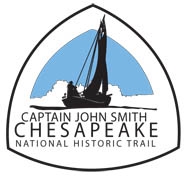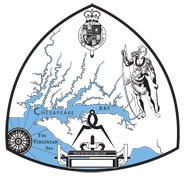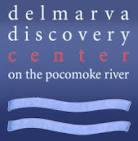 For 100 years, the National Park Service has preserved America’s special places “for the enjoyment, education, and inspiration of this and future generations.” Celebrate its second century with the Find Your Park GeoTour that launched April 2016 and explore these geocaches placed for you by National Park Service Rangers and their partners.
For 100 years, the National Park Service has preserved America’s special places “for the enjoyment, education, and inspiration of this and future generations.” Celebrate its second century with the Find Your Park GeoTour that launched April 2016 and explore these geocaches placed for you by National Park Service Rangers and their partners.
geocaching.com/play/geotours/findyourpark


Come on a journey to remember and commemorate the history and travels of Captain John Smith! Over four hundred years ago, Englishman John Smith and a small crew set out in an open boat to explore the Chesapeake Bay. Between 1607 and 1609 Smith mapped and documented nearly 3,000 miles of the Bay and its rivers. Along the way he visited many thriving American Indians communities and gathered information about this “fruitful and delightsome land.” In December 2006 the U.S. Congress designated the routes of Smith’s explorations of the Chesapeake as a national historic trail—the first national water trail.
Are you ready to follow in the wake of Captain John Smith? Visit sites along the National Historic Trail and learn about the native cultures and the natural environment of the 17th-century Chesapeake through the Captain John Smith Chesapeake Geotrail. The Trail provides opportunities for you to experience the Bay through the routes and places associated with Smith’s explorations. Caches will be located in museums, refuges, parks, and towns in Virginia, Maryland and Delaware along the rivers and creeks that Smith and his crew explored four centuries ago.
The Captain John Smith (CJS) Geotrail launched June 4, 2011 with over 40 caches within Maryland, Virginia and Delaware. A trackable geo coin will be awarded to the first 400 geocachers, while supplies last, for locating at least 15 CJS caches. To be eligible for the coin, geocachers must download a passport from either the CJS Geotrail or Maryland Geocaching Society website. Geocachers must find and log at least 15 finds, record the code word from each cache on their passport and post a picture of themselve at each cache location. After discovering the 15 required caches, geocachers may have thier passports validated in person or via mail at the National Park Service, Chesapeake Bay Office located at 410 Severn Ave, Suite 314, Annapolis, MD 21403. Please refer to the passport for complete validation instructions.
Participating in the CJS geotrail is fun and we hope that many people join in. However, it is not a requirement for logging your find on this cache once you find the container.
You are seeking a traditional hide. The cache is a camouflaged Lock & Lock. This cache is only available during daylight hours. Please no night caching! The cache is located outside of the fee area of the museum. However, you can call 410-957-9933 or visit www. delmarvadiscoverycenter.org for updated information on the facility.

Delmarva Discovery Center is located on the Pocomoke River in downtown Pocomoke City. The Center features many permanent exhibits, including exhibits on river ecology and human history of the region (the first recorded battle in North America between Englishmen occurred in 1635 on the Pocomoke River!), the steamship era, decoy carving and sailing. Both children and adults can enjoy the aquarium and touchtanks. This Center was the designation of a Chesapeake Bay National Gateway site that ties into the Captain John Smith Water Trail
The Native Americans that inhabited the Pocomoke River were originally called Wighcocomocos, but their name was changed by Englishmen to Pocomoke. The river originates in the Great Cypress Swamp in Delaware and flows southwesterly into the Pocomoke Sound before ending in the Chesapeake Bay. Pocomoke originates from the Native American word, meaning black water, which is the color of the Pocomoke River due to all the tannins leaching in from fallen leaves, plant roots, and vegetation along the river banks. Native Americans used the river as a conduit for travel and trade as did early colonists moving inland from settlements on the Chesapeake Bay.

Captain John Smith traveled north along the Eastern Shore and explored the mouth of the Pocomoke River in search of freshwater following a damaging storm during his first voyage. Later voyagers found it difficult to navigate, and in 1913 the USACE dredged the mouth of the river to provide more access for navigation.

Thanks to Run & Hike for helping with this hide and to the Maryland Geocaching Society for assisting with this project!